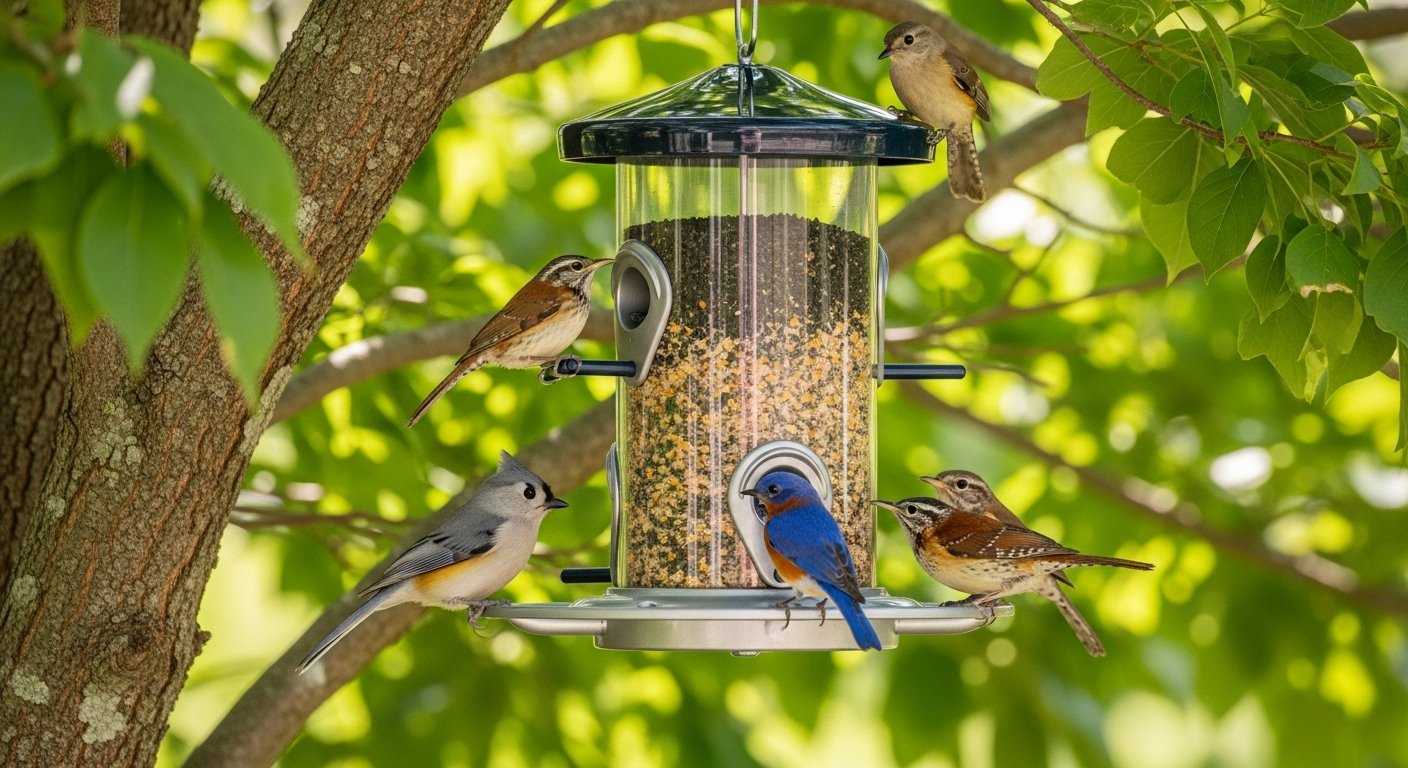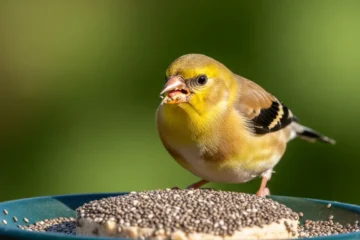Attracting birds to your feeder can provide endless enjoyment and enrich your outdoor environment. Here’s a simple guide to help you attract a variety of birds to your garden or yard.
1. Choose the Right Bird Feeder
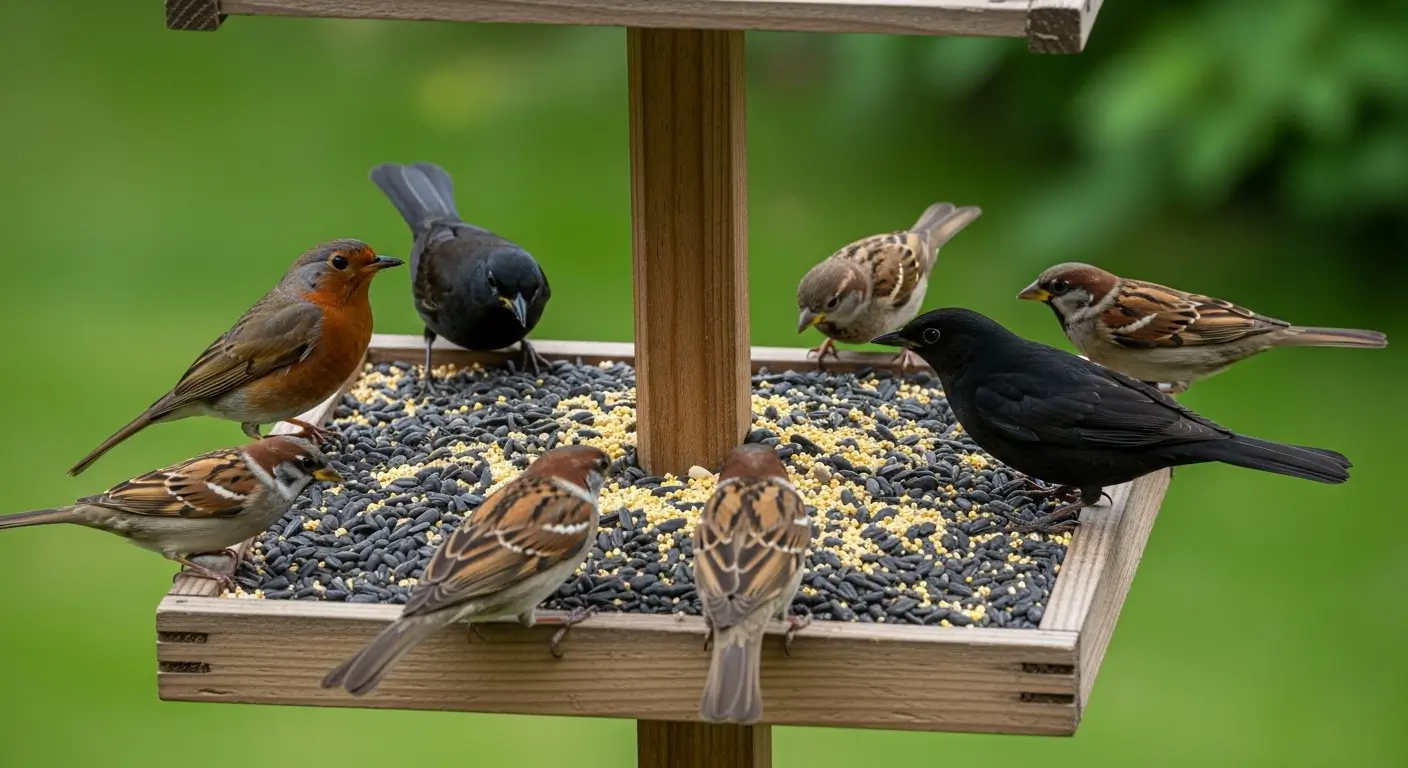
Selecting the appropriate feeder can significantly influence which birds visit. Common options include:
- Tube Feeders: Ideal for smaller birds like finches and sparrows.
- Platform Feeders: Attract larger birds like cardinals and doves.
- Suet Feeders: Great for woodpeckers, nuthatches, and chickadees.
2. Offer Suitable Bird Food
Different birds prefer different types of food:
- Sunflower Seeds: A favorite among many bird species.
- Niger (Thistle) Seeds: Loved by finches.
- Suet: Attracts woodpeckers, nuthatches, and chickadees.
- Peanuts: Draw blue jays, titmice, and woodpeckers.
3. Provide Fresh Water
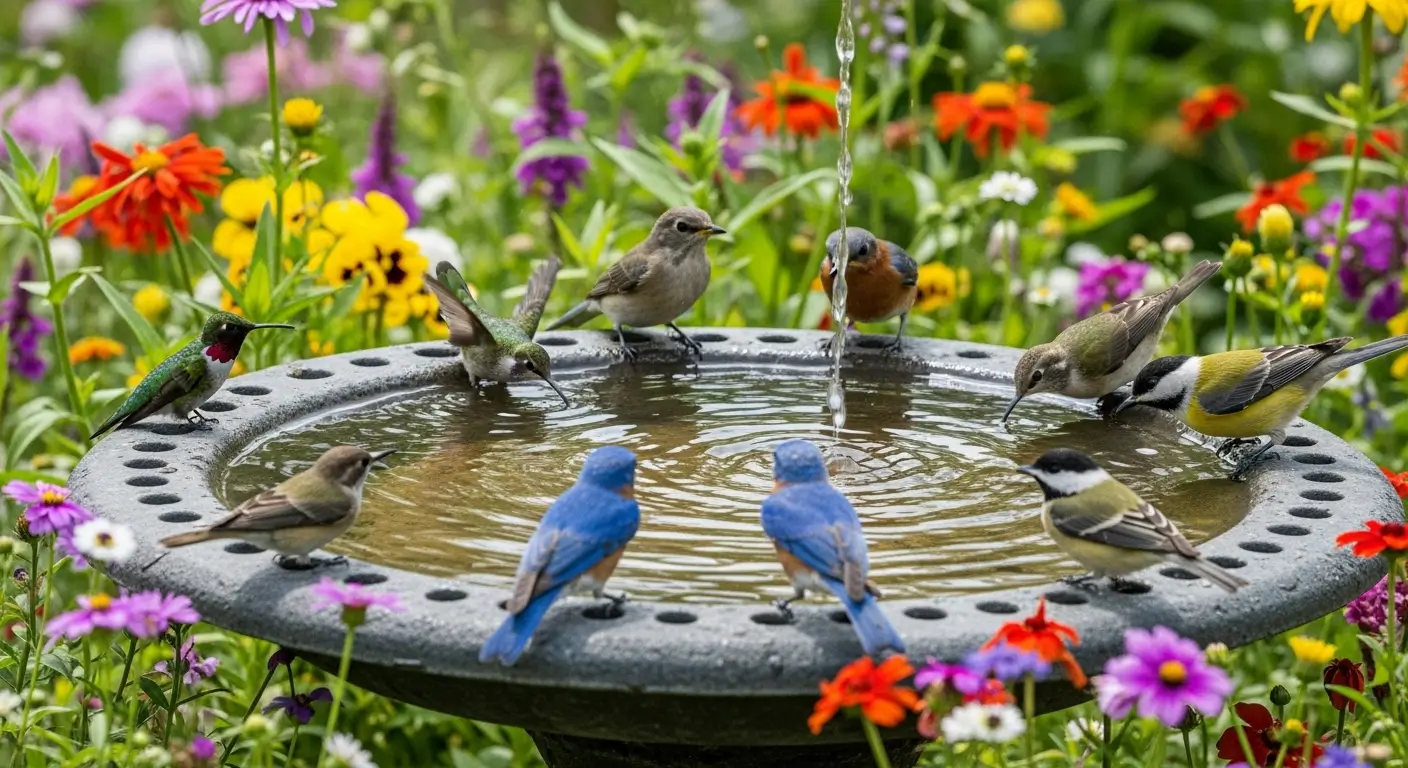
Birds need clean water for drinking and bathing. A shallow birdbath or water feature can dramatically increase bird traffic.
4. Check that Feeder Placement Is Safe
Place your feeder:
- Near Cover: Birds like nearby shrubs or trees for safety.
- Away from Predators: Keep feeders at least 10-12 feet away from bushes that may hide predators like cats.
- Visibility: Position feeders where you can easily watch and enjoy bird activity.
5. Keep Feeders Clean
Regular cleaning prevents disease and keeps birds coming back. Clean your feeders at least once every two weeks with a mild soap and water solution.
6. Create a Bird-Friendly Environment
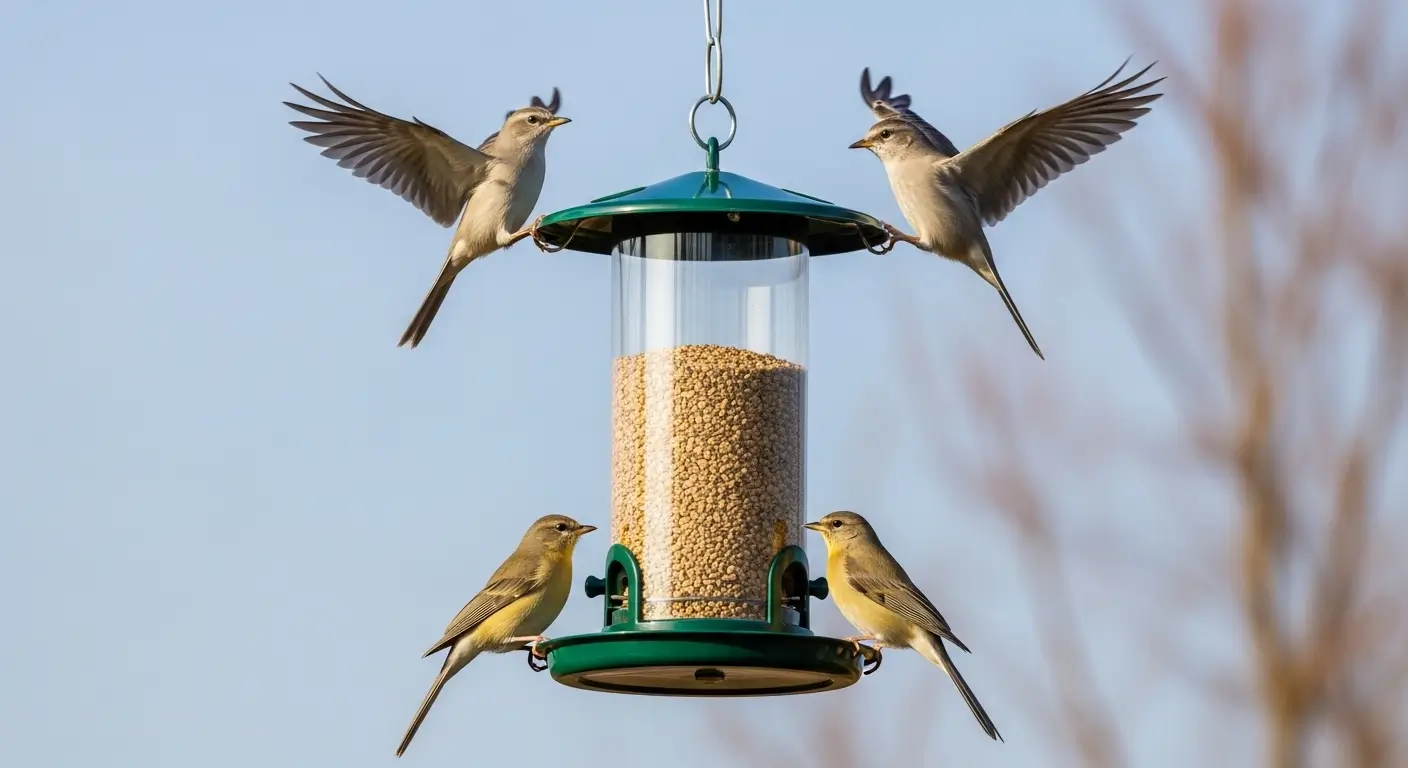
Plant native shrubs and flowers to provide natural food sources, nesting materials, and shelter. Plants that produce berries or seeds, such as coneflowers or holly, attract various birds.
7. Maintain a Regular Feeding Schedule
Consistency encourages birds to visit regularly. Refill feeders at the same time each day to build routine.
8. Place Your Feeder in a Safe and Quiet Spot
Birds like calm and safe places to eat. Hang your feeder near trees or shrubs, where birds can hide if they feel scared. Avoid noisy areas or places with too much human traffic. This helps birds feel more relaxed and come back often.
9. Use the Right Birdseed for Local Species
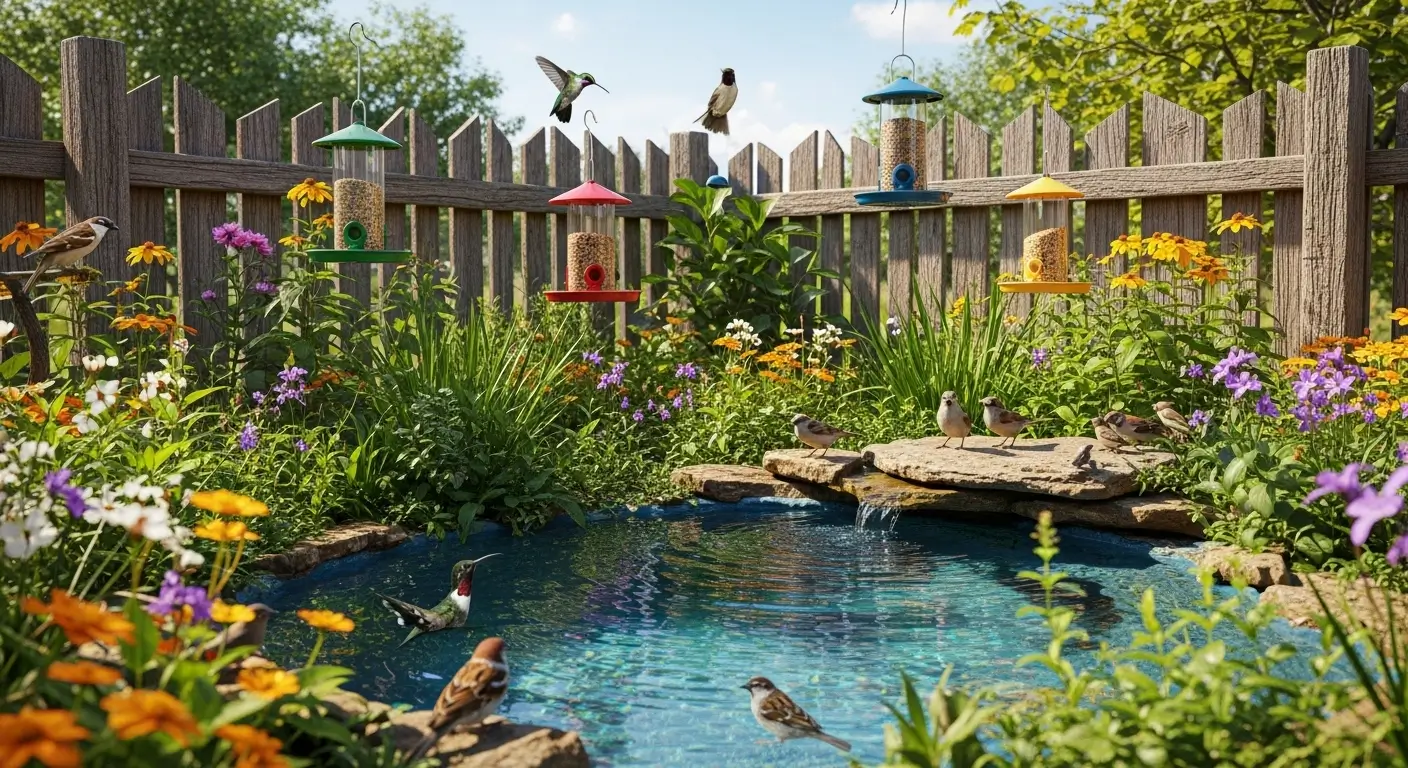
Different birds eat different seeds. The black oil sunflower seeds attract chickadees, cardinals, and finches. The nyjer seeds can be used for goldfinches and millet for sparrows. Offering the right food brings the right birds.
10. Be Consistent with Feeding
Birds remember where to find food. If you stop refilling your feeder then they may stop visiting. Try to refill it regularly when food is hard to find. A consistent food source builds bird loyalty.
11. Add Natural Plants and Shrubs
Native plants offer food, shelter, and safety to birds. Berry bushes attract robins and waxwings, while flower seeds bring finches and sparrows. Plants like serviceberry or coneflowers make your yard more bird-friendly year-round.
12. Keep Pets Away from Feeders
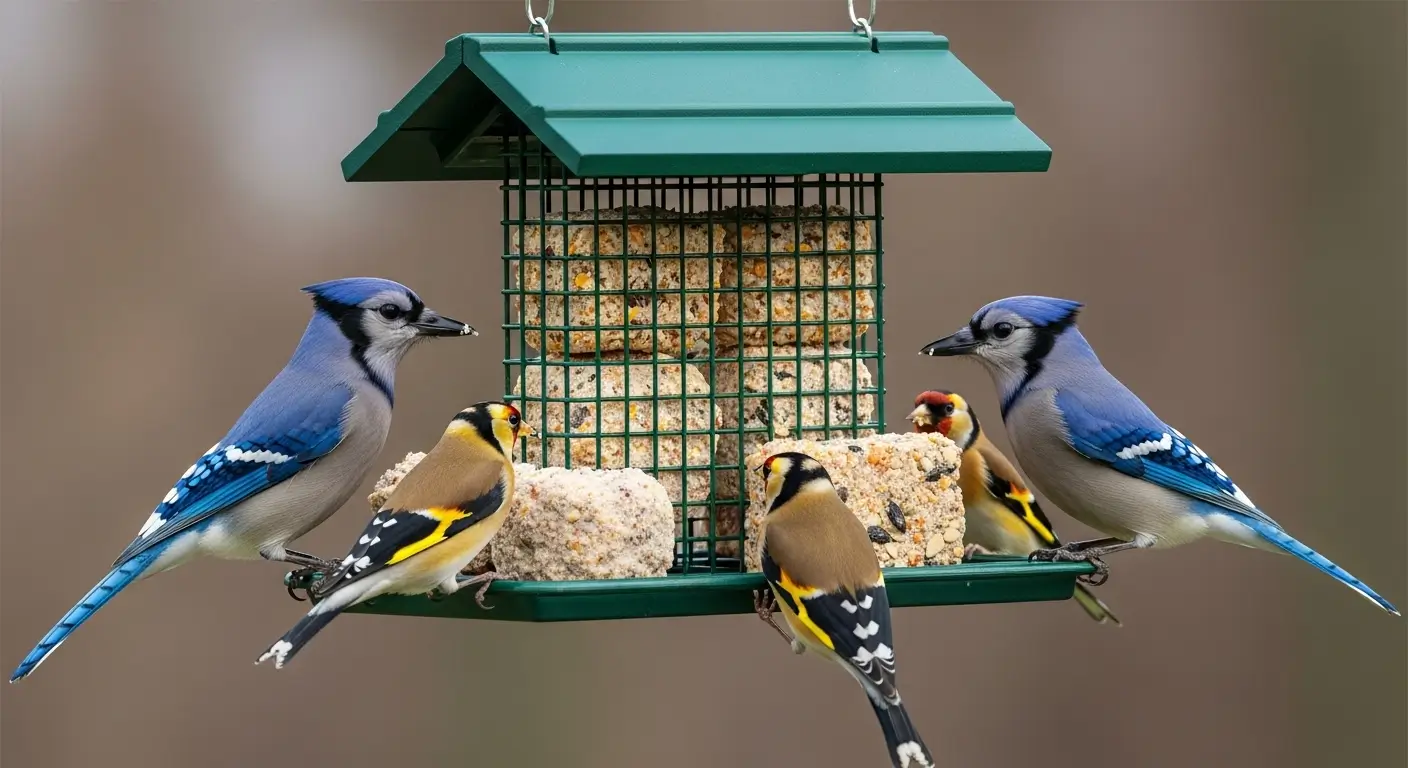
Cats and dogs can scare birds away. If you have pets then place feeders out of their reach or use fencing. Keep feeders off the ground and near cover. A peaceful space helps birds feed without fear.
13. Avoid Using Pesticides in Your Yard
Chemicals in gardens can harm birds or reduce the insects they eat. Instead of pesticides, try natural ways to protect plants. A chemical-free yard supports both seed-eating and insect-eating birds like wrens and swallows.
14. Hang Feeders at the Right Height
Feeder height affects which birds visit. Small songbirds like feeders hung 5 to 6 feet off the ground. Ground-feeding birds like juncos prefer low trays. Employ a mix of heights to invite different bird types.
15. Use Feeders with Squirrel Protection
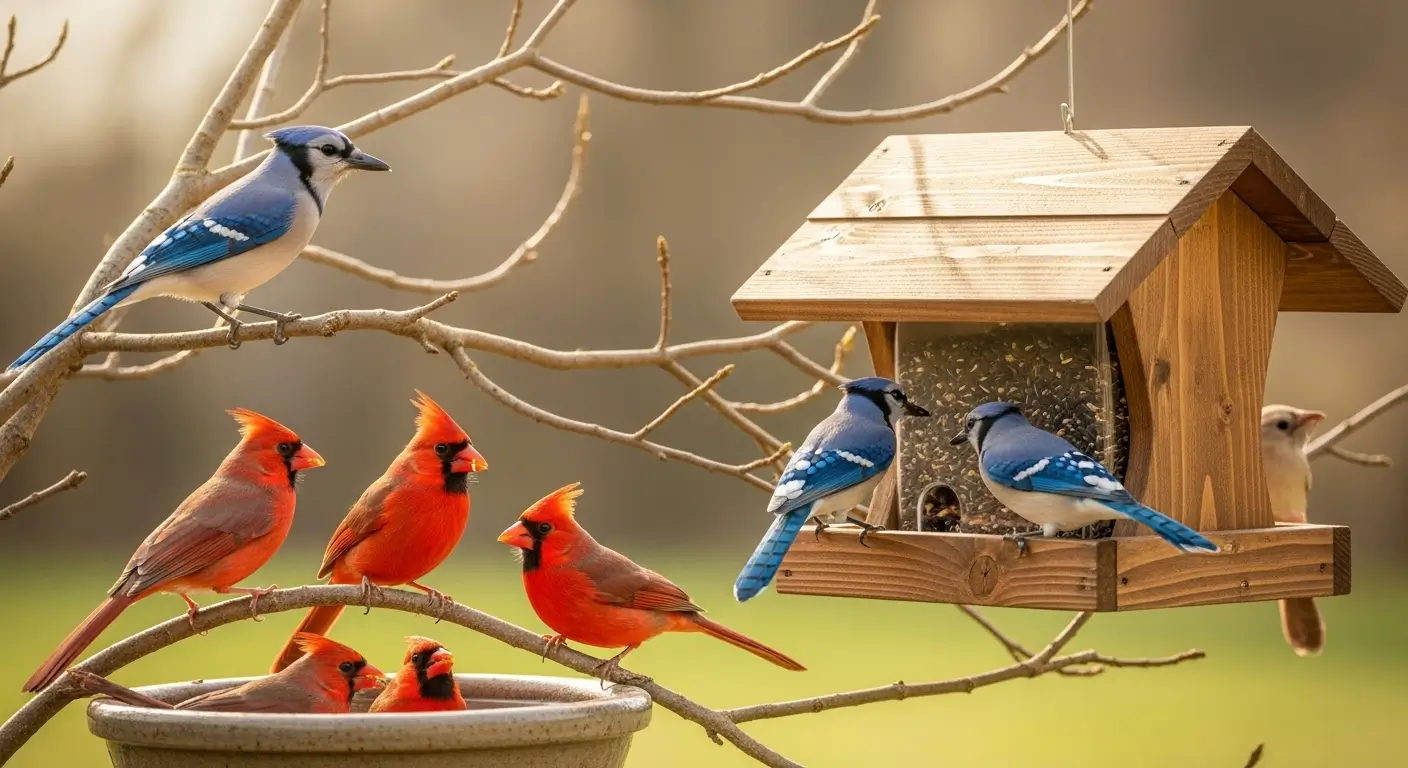
Squirrels often eat birdseed and scare birds away. Use squirrel-proof feeders or place a baffle above the feeder. Keeping squirrels away helps birds to eat peacefully and saves seed for the birds you want to feed.
Things to Avoid to Attract More Birds to Your Feeders
Here are certain things that should be avoided to allow more presence of birds at your feeders:
-
Avoid using spoiled or moldy seed because birds will ignore or avoid them.
-
Skip placing feeders near reflective windows because collisions can scare birds away.
-
Avoid strong-smelling or chemical-treated feeders, since these can repel birds.
-
Don’t hang feeders without cleaning them regularly.
-
Avoid placing feeders near predators like outdoor cats or hawks.
-
Don’t offer food types not suited to local species as birds ignore unfamiliar feed.
-
Avoid feeders that swing too much in the wind because they can interfere during feeding process.
By following these easy tips, you’ll soon enjoy the delightful sight and sound of various birds visiting your yard.

